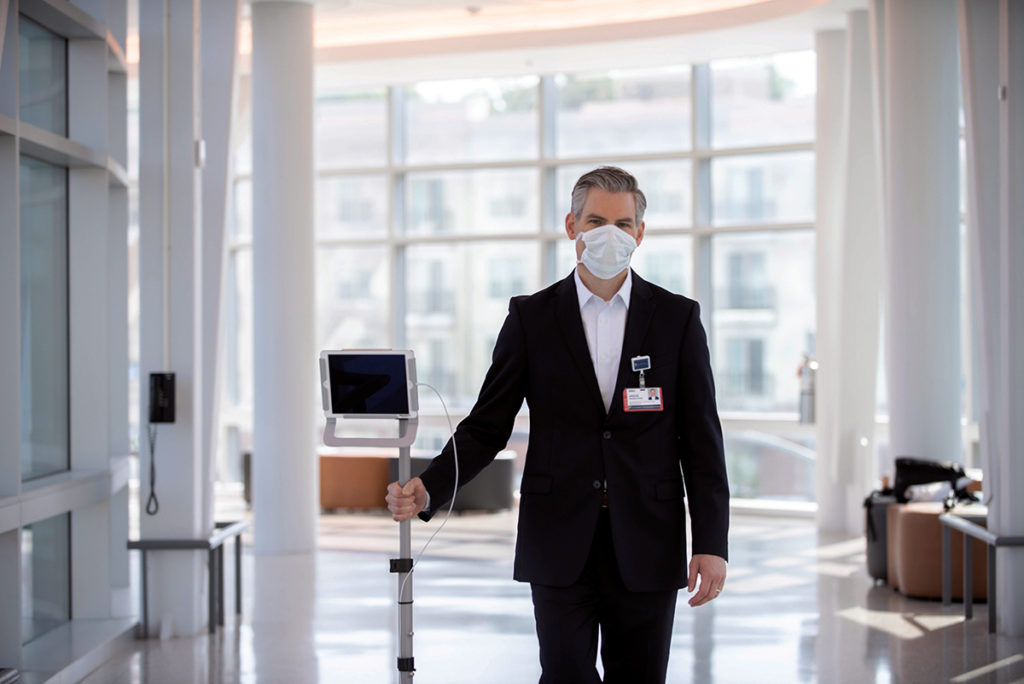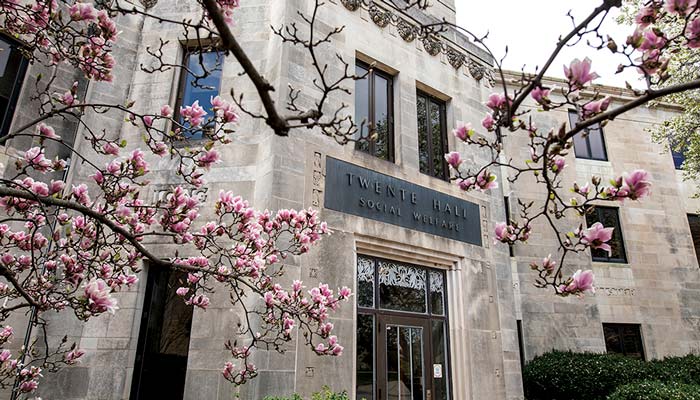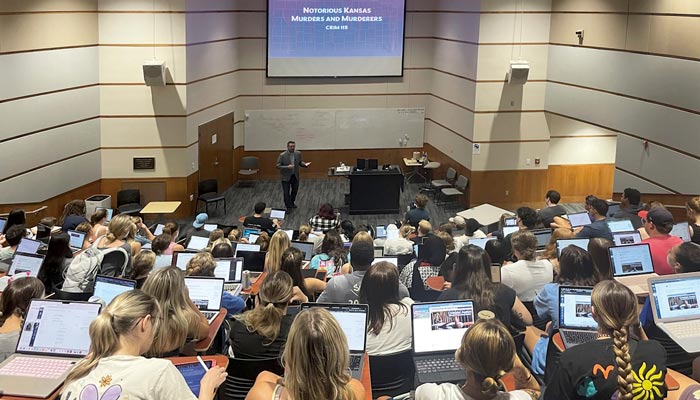Telehealth flies high
Pandemic helps launch new era of high-tech health care

An aphorism making the rounds at 39th and Rainbow goes something like this: “A pandemic is like flying an airplane while you’re building it.” Few aspects of medicine in the age of COVID-19 better exemplify the notion of seat-of-the-pants piloting than telehealth, which matured, literally in a matter of days, into something resembling a fully formed mode of health care delivery.
From March 1 to March 14, the University of Kansas Health System recorded a total of 10 telehealth cases; by the end of March, it was 1,900 per day. From March 17 to Sept. 1, the hospital logged more than 115,000 telehealth encounters, surpassing, in a matter of months, a four-year goal set two years earlier for a cumulative total of 100,000 telehealth visits.
Within the first two weeks of the pandemic declaration, the hospital trained 2,000 health care providers and their office teams, brought in software specialists to create new coding for electronic medical records, and set about acquiring 2,500 software licenses, cameras and headsets. (With most electronic equipment stranded in China, the hospital for a time relied on personal phones, tablets and laptops, which required upgrades to secure encryption.)
“I actually have not heard one negative thing,” says Jason Grundstrom, the University of Kansas Health System’s executive director of continuum of care. “We’ve had some glitches along the way that we had to solve, but nobody has thrown their hands up in the air and said, ‘Stop! This is madness!’
“Just the opposite. We all get into health care because we want to help people who are hurting. This technology helps further that mission.”
As the immediate crisis eased and non-emergency patients, who made up the vast majority of telehealth consultations, have been allowed to return, the hospital’s rate of virtual health care cases has settled at about 20% of overall cases, a number that Grundstrom says is, for now, generally in line with other large institutions around the country and one he hopes University of Kansas Health System will be able to maintain.
That will depend, however, on the prospects for a Kansas “Parity Law,” which allows health care providers to be reimbursed for their services for telehealth consultations at rates similar to in-person visits, as well as a constantly fluctuating mix of private, state and federal policy.
Grundstrom and Health System colleagues this fall have begun meeting with state lawmakers and their legislative staff, with the hopes of enacting a Parity Law during the 2021 session of the Kansas Legislature. It is also hoped that a vibrant coordination of private insurers and public health care policy will enable the University of Kansas Health System, along with other health care providers, to continue the ascension of virtual consultations—which include not only patients, but also physicians and hospitals across the state—beyond the emergency declarations that allowed for 2020’s rapid telehealth growth.
So far, Grundstrom says, signs are encouraging, an outlook that seemed less certain mere months ago.
“It’s not yet 100 percent, wall-to-wall, but we are seeing some language come out that’s encouraging to us, to let us know that we can actually start making some decisions internally that will help us continue the telehealth program beyond the emergency declaration.”
As a teaching hospital, the University of Kansas Health System integrates student nurses and doctors into every aspect of virtual care, which aids current students as well as future patients.
“The expectation with just about every hospital in the nation,” Grundstrom says, “is that this will be a component of the work [current medical and nursing students] do.”Anyone interested in a telehealth consultation is encouraged to either speak with a local health care provider or visit kansashealthsystem.com and register via the MyChart link.








